> Introduction
A time of transformation
In 2016, higher education and technology are inextricably intertwined. Learning and teaching have evolved so that vast, almost infinite, amounts of information can instantly be called forth with a flick of a finger. Thanks to the internet, wireless broadband, and mobile computing, the modern classroom extends far beyond its walls.
Just 50 years ago, though, all of that was barely imaginable. Information was stored in books, as it had been for much of human history. Technological advances were limited primarily to conveniences like typewriters and overhead projectors. Little did most people know that in the 1960s, higher education was on the precipice of a digital revolution that would make information accessible to nearly everyone, setting the stage for a future where technology is integral to academe.
Use of rudimentary machines like the abacus reaches back thousands of years, but it took World War II to set in motion the development of the modern computer, as researchers pursued tools to help them crack enemy codes and calculate missile trajectories. In the 1950s computers became smaller, more reliable, and electronic. By 1966, the year The Chronicle was founded, computers were well on their way to miniaturization and affordability.
Over the next five decades, technology revolutionized higher education in more ways than could possibly be contained in one presentation. Here, we look at their impact on the learning experience inside the classroom and beyond.
> 1960s
Introduction of the minicomputer
Digital Equipment Corporation releases the PDP-1 computer, a radical shift in the theory behind computer design. Based on prior research conducted at MIT's Digital Computer Laboratory, the PDP-1 is a general-purpose computer that uses a hole punch and a paper tape reader to store and read data, a typewriter for data input, and a cathode ray tube display from which the programmer can view and edit programs and even display graphics and games. The PDP-1 is dubbed a minicomputer because it is much smaller than a mainframe and, even at a price of $120,000 (almost $1 million in 2016 dollars), more affordable.
Moving toward affordability
With a focus on making computers less expensive, Digital Equipment Corporation releases the PDP-8 computer costing $18,000 (almost $140,000 in 2016 dollars). The size of a small household refrigerator, the computer becomes affordable to some businesses and universities. More than 50,000 units will eventually be sold, making it the first commercially successful minicomputer.
Calculators
Using new integrated circuit technology, engineers at Texas Instruments develop a prototype for a small calculator that can be held in the hand and perform four functions — addition, subtraction, multiplication, and division. The device would soon replace calculators the size of typewriters.
Arpanet: forerunner to the internet
Researchers at the University of California at Los Angeles and Santa Barbara, Stanford Research Institute, and the University of Utah connect several machines to form Arpanet, a network for the U.S. military's Advanced Research Projects Agency. Charley Kline, a UCLA graduate student, transmits the first Arpanet message to Stanford University on October 29, 1969: the letters "L" and "O." It is intended to say "Login," but the system crashes midtransmission. "Login" is sucessfully sent an hour later, and the first network of computers is up and running. Other colleges will soon join.
> 1970s
Online learning's beginning
The Programmed Logic for Automatic Teaching Operations (Plato) learning system, created by the University of Illinois, becomes a popular networked learning environment for students. Plato's development helps pioneer many features of the modern internet, such as forums, message boards, online testing, email, chat rooms, instant messaging, and screen sharing.
A computer on a chip
The release of the microprocessor — a small, rugged, inexpensive circuit on a chip — starts a wave of innovation. Computers built with microprocessors, microcomputers, have the same or even greater computing power as their much larger and more-expensive predecessors.
Remember your No. 2 pencil
Exams are forever changed thanks to the introduction of Scantron. Automated grading greatly reduces the amount of time professors must spend marking multiple-choice tests.
Kit computers
As microprocessors improve and become more available and less expensive, students and faculty at college campuses purchase components or kits to build their own personal computers. With more people getting access to the technologies, programming languages and software begin to flourish.
Calculators for all
After barely five years on the market, some four-function calculators cost less than $20 (about $90 in today's dollars) and are widely used. Educators in schools worry that calculators will inhibit students' understanding of math, but students and faculty on college campuses are quick to adopt the new technology, which drastically decreases the time required to solve equations.
Personal computers hit the market
The Altair microcomputer kit appears on the cover of Popular Electronics magazine. Base kits start at $650 (almost $3,000 in 2016 dollars), considerably cheaper than previous minicomputers, and are pre-assembled. Sales take off, making it the first true personal computer. Different versions of the Altair store data on paper tape, cassettes, or floppy disks. Eventually two college dropouts found a new company to develop software specifically for the Altair. That new company? Microsoft.
College clubs move computers forward
Stanford hosts the Homebrew Computer Club, a regular gathering of computing enthusiasts who build and experiment with their home-built computers. Though similar clubs dot the country, Homebrew becomes famous after two of its members design a computer with built-in circuitry: the Apple I.
Apple makes its debut
With a color display, built-in keyboard, expansion slots and case, the Apple II computer takes a few years to catch on but becomes a bestseller because of its unique design: It’s ready to use right out of the box. The ease of setup attracts colleges that want their students to have uncomplicated access to computers.
The Commodore PET
Commodore computer company's PET (Personal Electronic Transactor) hits the market with a built-in keyboard, monitor, and cassette drive for data storage. It becomes popular with schools and colleges because of its all-in-one design and reasonable price. Along with the Apple II, personal computers start to work their way into mainstream college education. Colleges start creating computer labs for students and faculty.
Productivity software
Until now, most computer users had to write their own software and manage data via the command line on cumbersome systems. VisiCalc and Apple Writer for the Apple II, and similar software for non-Apple systems, make it much easier for users to manipulate data and text on their personal machines. For students and professors, assignments and course materials can now be completed electronically instead of via typewriter or paper.
> 1980s
A "portable" computer
At 24 pounds, the Osborne 1 is touted as the first portable computer. It includes everything the user needs, including free software and a handle for carrying. Students and professors with strong backs can transport the Osborne between campus and home instead of being limited to using the computer in one place.
The PC
IBM's first foray into the microcomputer market arrives and runs an operating system provided by Microsoft: MS-DOS. Though the IBM Personal Computer is less powerful than many competitors on the market, customers, especially in the business world, trust IBM's name and products, and the PC becomes an instant success. College computer labs soon start to purchase PCs, establishing them as a leading option for campus computing.
A global network
An alternative to Arpanet, Bitnet is started at the City University of New York and Yale University, stretching across the United States by 1982. Other networks around the world connect into Bitnet, making it global. By the early ’90s, millions of users at 1,400 organizations exchange noncommercial information for the benefit of research and education. For many faculty and students, Bitnet serves as their introduction to networking.
The first laptop
The 3.5-pound Epson HX-20 laptop is the first easily portable computer. Although its limited functionality hinders sales, its design influences future portable computers. As more laptops reach the market, generally at a fraction of the price of desktops, even more faculty and students are able to purchase their own computers and easily transport their work between home and the classroom.
Commodore 64
Small and affordable compared with its competitors, the Commodore 64 offers high-resolution graphics (for the time) and three channels of sound, making it an excellent gaming machine. It uses floppy disks for storage and users can purchase a modem to connect to networks like Bitnet or Arpanet. It soon finds its way into the classroom, businesses, and homes, and becomes the best-selling computer model of all time, with over 17 million units sold.
Internet opens up
The Department of Defense establishes an internal network, Milnet, and hands over the research and academic-focused parts of Arpanet to the National Science Foundation. Rapid expansion occurs under the NSF's governance, and within a few years the "internet" is open for commercial use.
Say "Hello" to Mac
With a price tag of $2,495 (almost $6,000 in 2016 dollars), the Apple Macintosh introduces the graphical user interface and a "mouse" to the masses. Prior computers all use text-based systems, where users interact with the system purely via text. The easy-to-use graphical interface helps to introduce even more people to the world of computing. User-friendly computers increase technology's role in disciplines where they were largely absent in the past, like music, art, and design.
Graphing calculators
Casio releases the first graphing calculator, the FX-7000G. Selling for around $200 in 2016 dollars, the programmable calculator's LCD display can plot graphs resulting from calculations and equations and soon becomes as ubiquitous as the four-function calculator had been a decade prior.
Printers go mainstream
The nail in the coffin of handwritten or typed assignments arrives in the form of the laser printer. Apple's LaserWriter is particularly influential thanks to its ability to connect to multiple computers. Colleges place them in computing centers, giving students and professors the ability to easily print assignments and course documents.
New institutions join the internet
CALC, the Computer Assisted Learning Center, launches its first online tutoring center on the QuantumLink network (one of the many networks of the time that will eventually give way to the internet) for Commodore 64 users. The QuantumLink Community College soon follows, offering noncredit online courses with live group instruction.
The internet gets faster
The National Science Foundation upgrades its high-speed national backbone, originially created in 1986, to support more Internet traffic. Users are attracted to the almost 28-times-faster data-transfer speeds, and by the end of the year, more than 10,000 hosts, including most colleges, are connected.
Making the internet useful
Academics and researchers embrace the internet and help to make it useful with technologies like Gopher from the University of Minnesota, a menu-driven information system, and Fetch from Dartmouth, which makes it easy to connect to FTP (high-speed file transfer) servers. Email makes its commercial debut and further simplifies the electronic transfer of information.
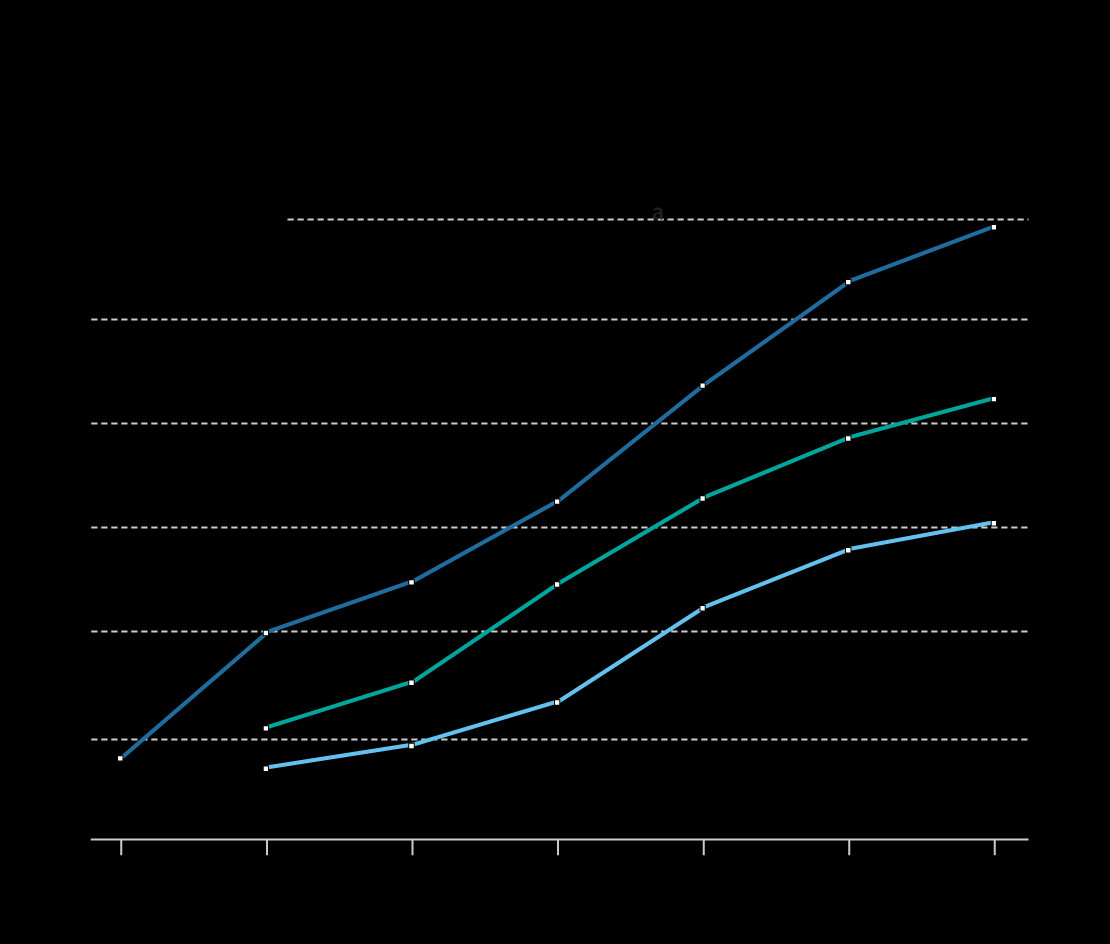
Rapid adoption of technology for teaching
College faculty were quick to add technology to their courses. In just six years, the use of email increased over 600 percent, and the use of internet resources increased by almost 300 percent.
60% of college courses
50
Internet Resources
40
Course Web Page
30
20
10
0
1994
1995
1996
1997
1998
1999
2000
Campus Computing Project
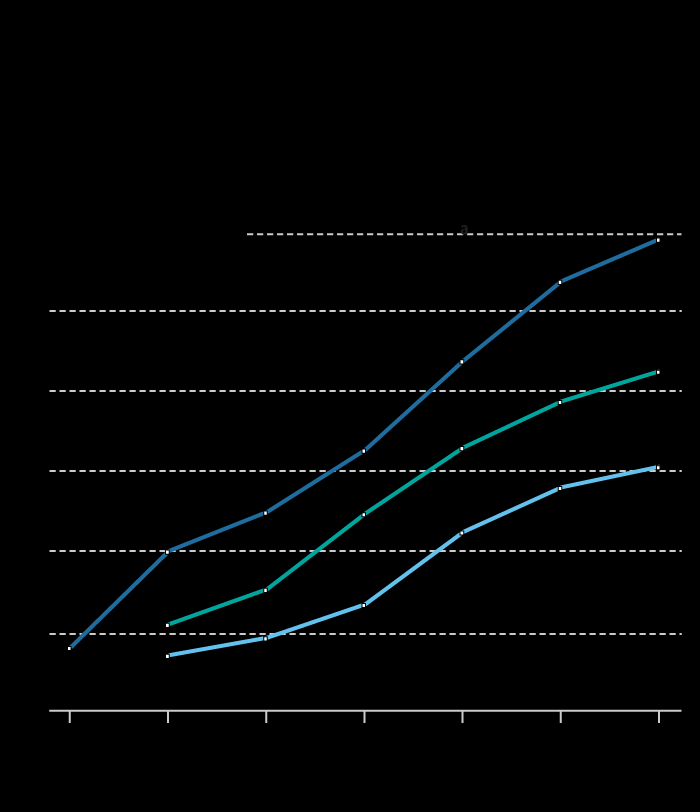
Rapid adoption of technology for teaching
College faculty were quick to add technology to their courses. In just six years, the use of email increased over 600 percent, and the use of internet resources increased by almost 300 percent.
60% of college courses
50
Internet Resources
40
Course Web Page
30
20
10
0
1994
1995
1996
1997
1998
1999
2000
Campus Computing Project
> 1990s
Windows 3.0 comes standard
After two releases that fail to gain traction, version 3.0 of Microsoft's graphical operating system, Windows, is a huge success. Windows has advanced graphics in color and can run on most PCs, and most are soon sold with Windows already installed. The ease of using PCs running Windows, paired with their decreasing costs, means more colleges can afford to offer computer labs, and more students and faculty can purchase their own computers for home and dorm use. As a result, Apple's popularity wanes in the '90s. However, by 2011, 30 percent of students own an Apple computer.
The World Wide Web
Tim Berners-Lee introduces the web, which has become synonymous with the internet itself. By providing features like a uniform resource locator (URL) for each location on the web, and HTML for building pages, the web improves navigation and creation of new content for the thousands of people connecting to the internet.
Browsing the web
By integrating rich graphics, icons, and interaction with a computer mouse, the Mosaic browser, developed at the National Center for Supercomputing Applications at the University of Illinois at Urbana-Champaign, takes exploring the web to the next level. The creators of Mosaic will go on to found Netscape, which will further modernize the internet by adding a method of completing secure commercial transactions.
Purchasing textbooks online
After the launch of eBay, Amazon, and similar online sellers, students increasingly buy their textbooks online since they can often be found new or used at a lower price than at the campus store. To deal with decreasing revenues, campus stores are forced to change their business models, with some decreasing the number of physical books for sale or eliminating them altogether. Some switch to online-purchase alternatives, and others offer options like rentals.
The internet hits the mainstream
Most American households have access to the internet, though at this point it's mostly through slow dial-up modems that tie up the home phone lines. The first generation of children to grow up with the internet will arrive at college already knowing how to complete research and find sources online.
Blackboard
Organizing course information, syllabi, resources, study guides, and feedback on one website, Blackboard becomes the industry standard for college courses' online presence. By 2006, the company controls 80 to 90 percent of the higher-ed market. Over time, users find the website clunky and unreliable, especially as it continues to add new features. In 2011, 93 percent of respondants to a customer-opinion survey indicate they "hate" the company. By the spring of 2015, Blackboard's market share has dropped to about 44 percent, and alternatives like Moodle are gaining traction.*
Going wireless
The ubiquitous ethernet cable suddenly becomes unnecessary as Wi-Fi allows users to connect to the internet wirelessly. Wireless internet access becomes the expectation in classrooms, but connectivity seems to be an eternal problem.
Searching becomes standard
By the end of the '90s, search engines are helping to organize and reach the seemingly limitless amounts of information on the web. One of those companies, Google, got its start on Stanford University's servers in 1996, but rapidly outgrew that host. Filing for incorporation in 1999, Google receives positive reviews by the end of the year for its "uncanny knack for returning extremely relevant results." Google's first hire, Craig Silverstein, will go on to work for the online-learning site Khan Academy in 2012.
Computers required
Apple's new iBook laptop is even more portable thanks to Wi-Fi support and lower prices. More students are taking laptops like the iBook to college with them, and some institutions start requiring students to purchase them.
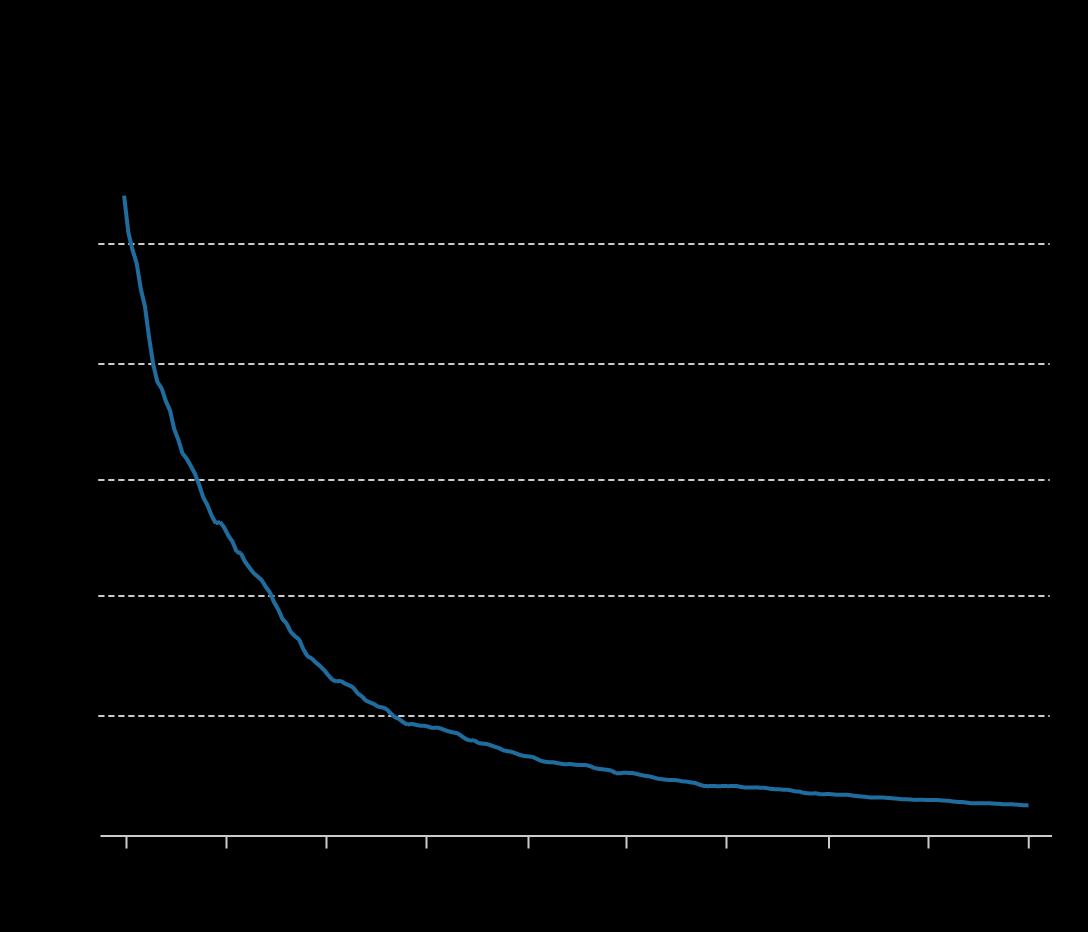
Cost of computers over time
Over the course of 50 years, computers decreased in price from something only the largest corporations and government agencies could afford to a routine purchase for the average American.
1000
CPI
800
600
400
200
0
1998
2000
2012
2014
2016
2008
2010
2002
2004
2006
U.S. Bureau of Labor Statistics
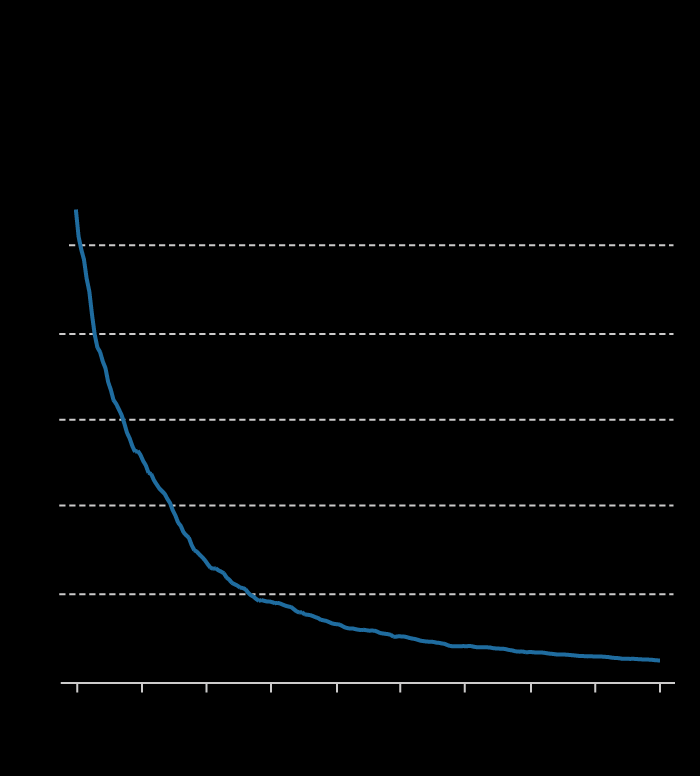
Cost of computers over time
Over the course of 50 years, computers decreased in price from something only the largest corporations and government agencies could afford to a routine purchase for the average American.
1000
CPI
800
600
400
200
0
1998
2000
2012
2014
2016
2002
2004
2006
2008
2010
U.S. Bureau of Labor Statistics
Accreditation for online learning
In a major step forward for online learning, Jones International University, founded in 1993, is the first entirely online institution to be accredited. Students and faculty no longer need to set foot in a physical classroom to get a degree. By 2016, there are more than 2,000 accredited online institutions offering bachelor's degrees.
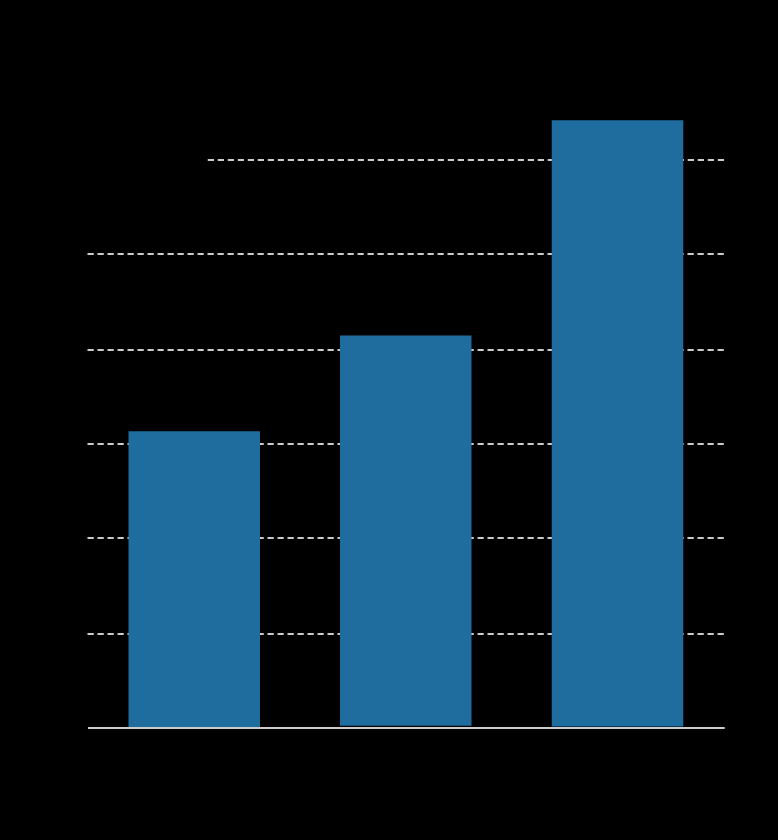
Students enrolled in online classes
30% of students
25
20
15
10
5
0
2007-8
2011-12
2003-4
National Center for Education Statistics
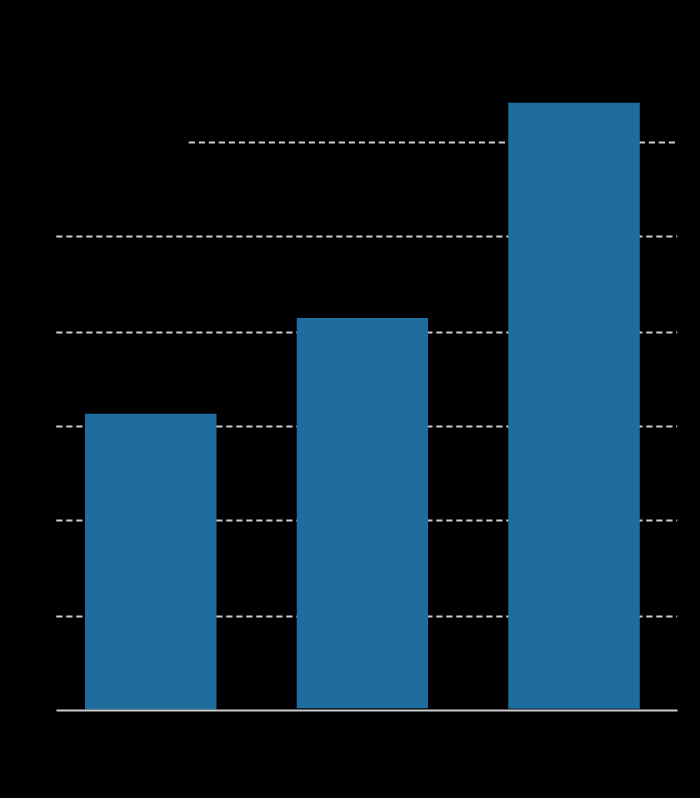
Students enrolled in online classes
30% of students
25
20
15
10
5
0
2007-8
2011-12
2003-4
National Center for Education Statistics
> 2000s
E-textbooks
Education companies start offering electronic versions of textbooks that cost less than their print alternatives. E-textbooks are slow to catch on, but by 2014, 57 percent of students report using them.
OpenCourseWare
The Massachusetts Institute of Technology’s new online learning project offers lectures and course materials free of charge to anyone in the world.
Skype
Video chatting becomes mainstream with the public release of Skype. Face-to-face conversations can now occur via the internet, and guests from around the world can be brought into any classroom.
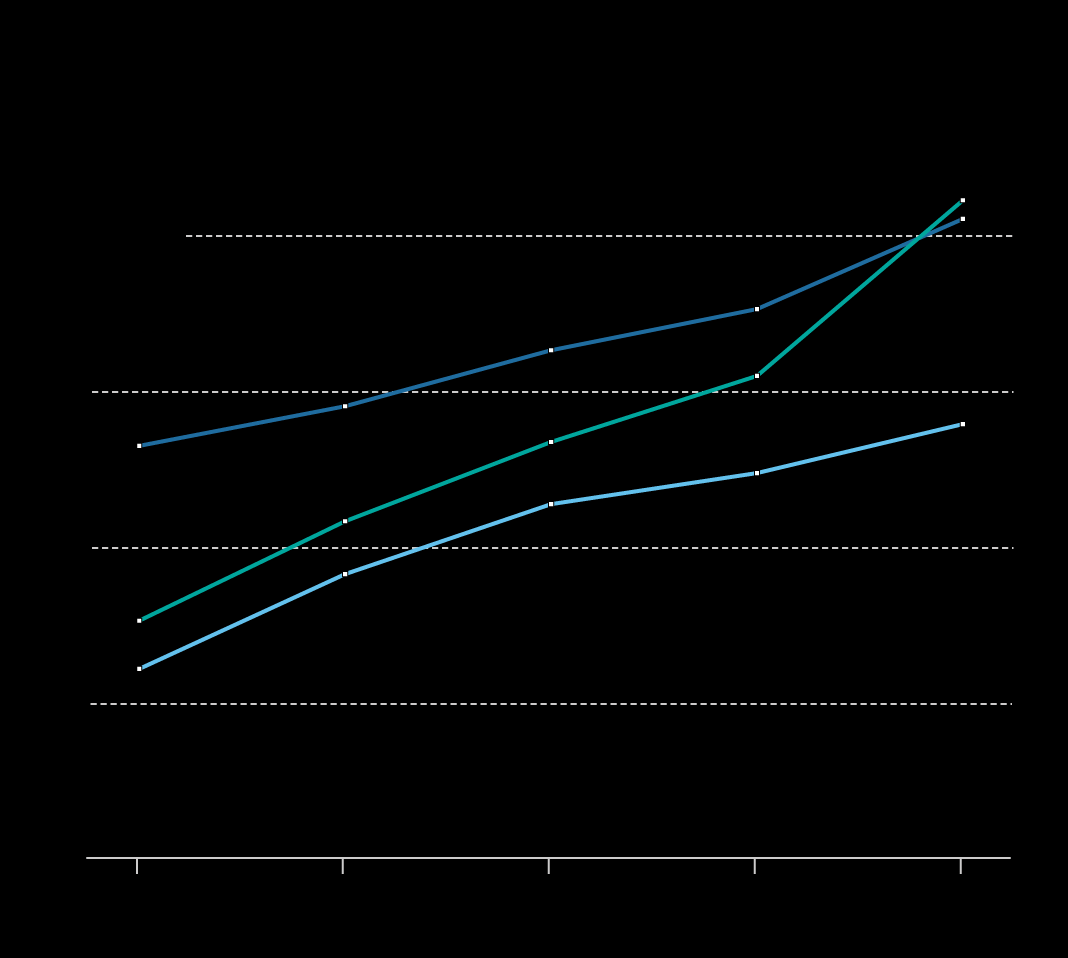
The rise of the personal computer
In the span of 20 years, personal computer use for adults attending school rose from 31 to 85 percent, eclipsing the percentage of those using computers at home.
School
Home
80% of adults
60
Work
40
20
0
1984
1989
1993
1997
2003
Current Population Survey
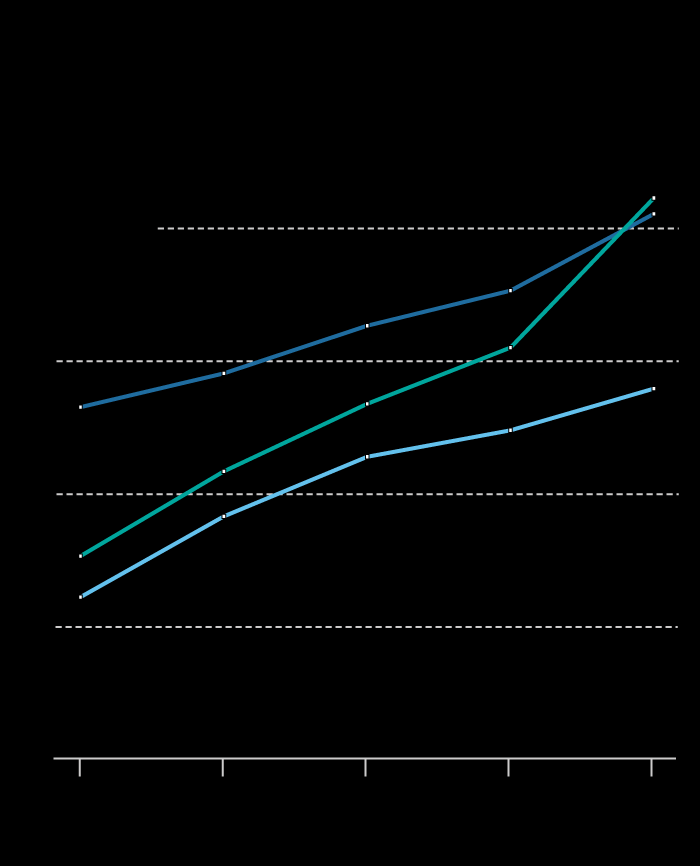
The rise of the personal computer
In the span of 20 years, personal computer use for adults attending school rose from 31 to 85 percent, eclipsing the percentage of those using computers at home.
80% of adults
Home
School
60
Work
40
20
0
1984
1989
1993
1997
2003
Current Population Survey
The online social network, Facebook, launches. Four Harvard students, including Mark Zuckerberg, created the website two years earlier in their dorm rooms. By 2011, 90 percent of college students use Facebook, and 58 percent use it more than once a day. Professors offer course discussion, information, and materials, and encourage students to interact with one another via Facebook groups.
Cloud Computing
"The cloud" (computing services reached via the Internet) is first made commercially available by Amazon. Microsoft follows two years later. Colleges are slow to adopt the new technology over concerns about maintaining the privacy of their data but soon realize that cloud computing will allow them to stop maintaining their own expensive data centers. By the mid-2010s, most colleges have switched over to the cloud. Students also embrace cloud computing with services like Google Drive, where they can create, edit, and manage documents, spread sheets, and other files from any location.
iPhone
Apple's iPhone is released with an easy-to-use touch screen and impressive user interface that marries phone functions with applications and internet access. Android devices soon follow. Students use their smartphones for a variety of coursework-related tasks, like emailing professors and classmates, calculating equations, accessing dictionaries, searching the internet, and translating foreign languages. By 2011, 55 percent of students take smartphones with them to college.
MOOCs
The University of Manitoba offers the first MOOC (massive open online course), which has unlimited participation and open access. MOOCs debut to much fanfare with claims that they will change the education landscape forever, but within a few years excitment dwindles because of low graduation rates and disappointing demographics (most takers had already earned a traditional degree). Still, many colleges and companies, like Coursera, still offer MOOCs to students worldwide.
3D Printing
The first commercially available 3-D printers debut as kits and are adopted for classroom use. Applications range from restoring damaged artifacts for archaeological purposes to rapid prototype development for a variety of fields including computer science, business, and medicine.
Virtual reality & wearable tech
Recent advances in virtual-reality devices and wearable tech might lead to the next big technological advances in higher education. Instruction could include virtually experiencing artifacts, museums, locations, and even people, and professors are already experimenting with including devices like the Apple Watch in their clasrooms.
Artificial Intelligence
Experimentation with artificial intelligence suggests that the burden of instruction might soon be lessened by computers. Pilot programs for online classes leverage virtual assistants to answer common student questions and track progress. In the future, these technologies could also be extended to match students struggling with a topic to students who have already mastered it.